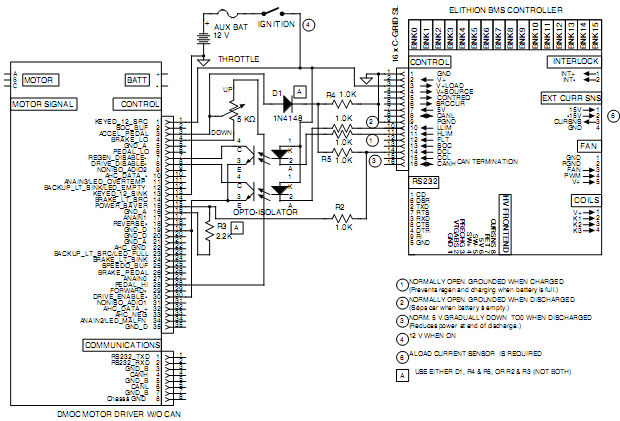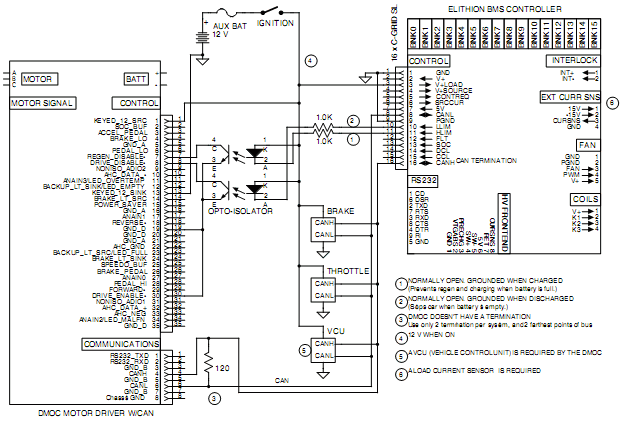
Lithiumate™ Manual |
|
index Azure Using an Azure DMOC AC motor driver (inverter) with an Lithiumate BMS. 
A contactor is not required when using a DMOC motor driver, as they include internal contactors. However, its precharge time is extremely long, and unacceptable for vehicle applications. Therefore, it is best if the battery is always connected to the DMOC, and the DMOC is controlled off and on through low voltage signals. A load current sensor is required when using a DMOC motor driver. DMOC motor drivers are sold pre-configured for either wire control or CAN control. If configured for wire control, they can be used as any other analog motor driver:

Interfacing the Azure motor driver (wire control) and the Elithion BMS
If configured for CAN bus control, they require a VCU (Vehicle Control Unit) to translate between the various signals on the CAN bus (BMS, throttle, etc.) and what the DMOC expects. In particular, there are at least three reasons why a VCU is required:

Interfacing the Azure motor driver (CAN control) and the Elithion BMS
| ||
© 2008~2025 Elithion™, LLC. All rights reserved, except where noted by CC mark. Page published on May 07 2024.
The Elithion brand and the 'ə' (upside down 'e') logo are Trademarks of Elithion LLC. Graphic design by morninglori